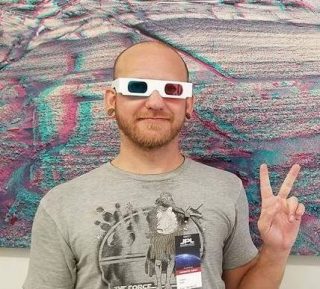UPON FURTHER INSPECTION. Upon Further Inspection. Upon further inspection. upon further inspection…
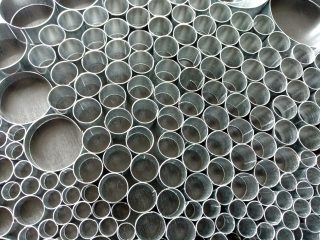
I came on board R/V Falkor and immediately set to work fabricating and assembling the many parts and pieces that will come to abstractly resemble a radiolarian. It is a rather time intensive process of cutting, folding, and rolling small cylinders out of strips of metal, over and over. It is a labor of love, and it gives me time to think. During this time, I have been absorbing the research that is currently being conducted.
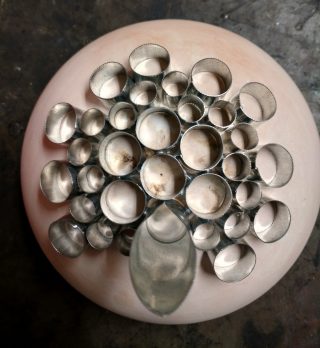
The Marine Technicians on board, Leighton Rolley, Deb Smith, and John Fulmer, have been incredibly kind and patient in describing the process of bathymetrically mapping the ocean floor to me and the two other Artist-at-Sea participants. With the passing of each day, we have been going into greater and greater detail of the process and history of bathymetry – as I sit here, slowly rolling metal cylinders, I find myself making both abstract and direct connections to the work that I am creating. The research vessel Falkor is equipped with a multibeam sonar array that is used to conduct deep ocean floor mapping. The multibeam works by sending out over 400 individual sonar signals at a time, all in line with each other. In order to make this work, and generate the incredible level of detail that it does, each sonar beam is focused to a one degree cone as it follows its warped path toward the sea floor – and then back again. So, if you were to visualize these conical beams as they collide with the ocean floor, you would end up with a series of cylinders, that when seen on a 2-dimensional surface would appear as overlapping circles and ovals.
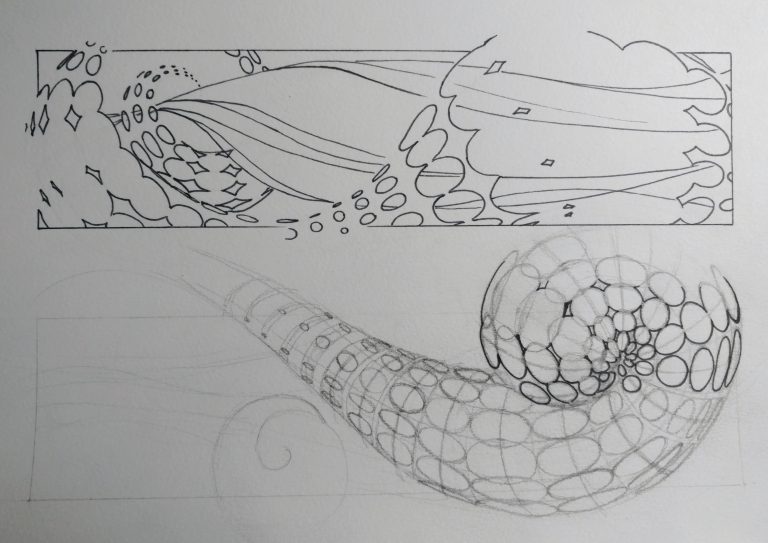
Shaping Perceptions
I am interested in the means by which computer-generated imagery translates the physical world into the digital. If replicating a physical object by means of molding and casting it is to take one step in removing it from the “real” thing, then what does it mean to scan that object and create a digital copy? How does the process of observing and recording the environment around us alter our perception as a result of limiting it to our means of empirically recording it? In other words, the means by which we perceive and record data from the world around us, and resultantly develop our own machinations, alters our understanding as a result of the limitations of our sensory perceptions and the physical laws by which we are governed. I have reflected on these thoughts in previous works by emulating neural structures using the most finite polygon used in 3D computer graphic renderings: the triangle (in conjunction with various sensors and data management software).
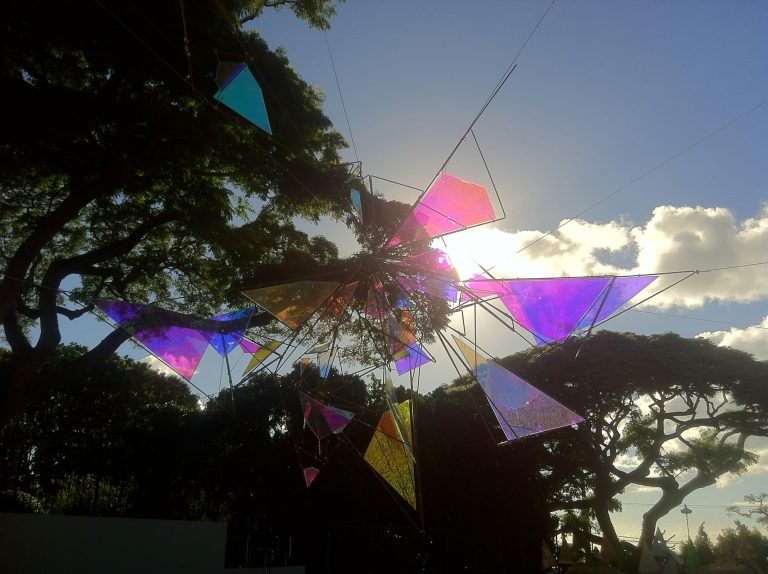
Smaller still than then the triangle are the nodes, or points, at each vertex. Now, a point has no definable space, but if it is outlined it can be represented as a circle, and if that circle is made three dimensional, you end up with a sphere. So, I began dissecting the sphere with a grid composed of encircled and extruded points (cylinders). Seeing as how the sphere that I was dissecting is a mathematical construct, it seemed appropriate to look to the natural world for the source of mapping its surface. Living in Hawaii at the time, I quickly came to bamboo; after all, bamboo bridges the divide between nature and human development. Yielding a tensile strength equivalent to mild steel, the quickly growing material has long been used for architecture and construction. Exploring the sphere as a dimensional “point,” has taken me to the boundary of theoretical and the physical understanding of matter.
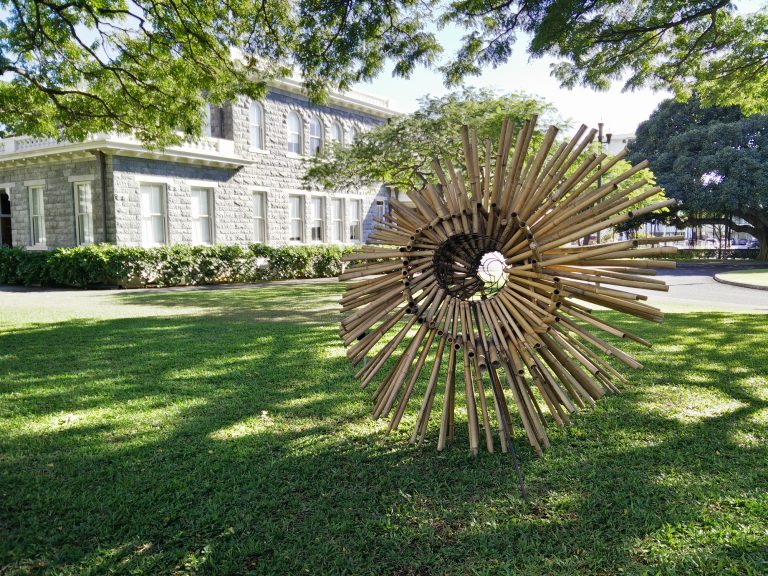
Visual Connections
Upon discovering radiolaria via discussions with friends and colleagues working in oceanography, I became enamored with its beauty and intrigued by this microorganism which creates a symmetrical lattice from silica. Visually, the form resembles the spherical dissection and mapping that I had been exploring, and tangibly my curiosity has been piqued by the geometry of the structure and its correlation with the silica molecule. The series of spherical shells are created by this organism as it seemingly responds to the physical material restraints of its building material at a microscopic scale. However, without scientific investigation, this remains a hypothesis. And so, I began investigating more and more about various microorganisms of the sea, which has brought me here to the R/V Falkor and multibeam bathymetry!
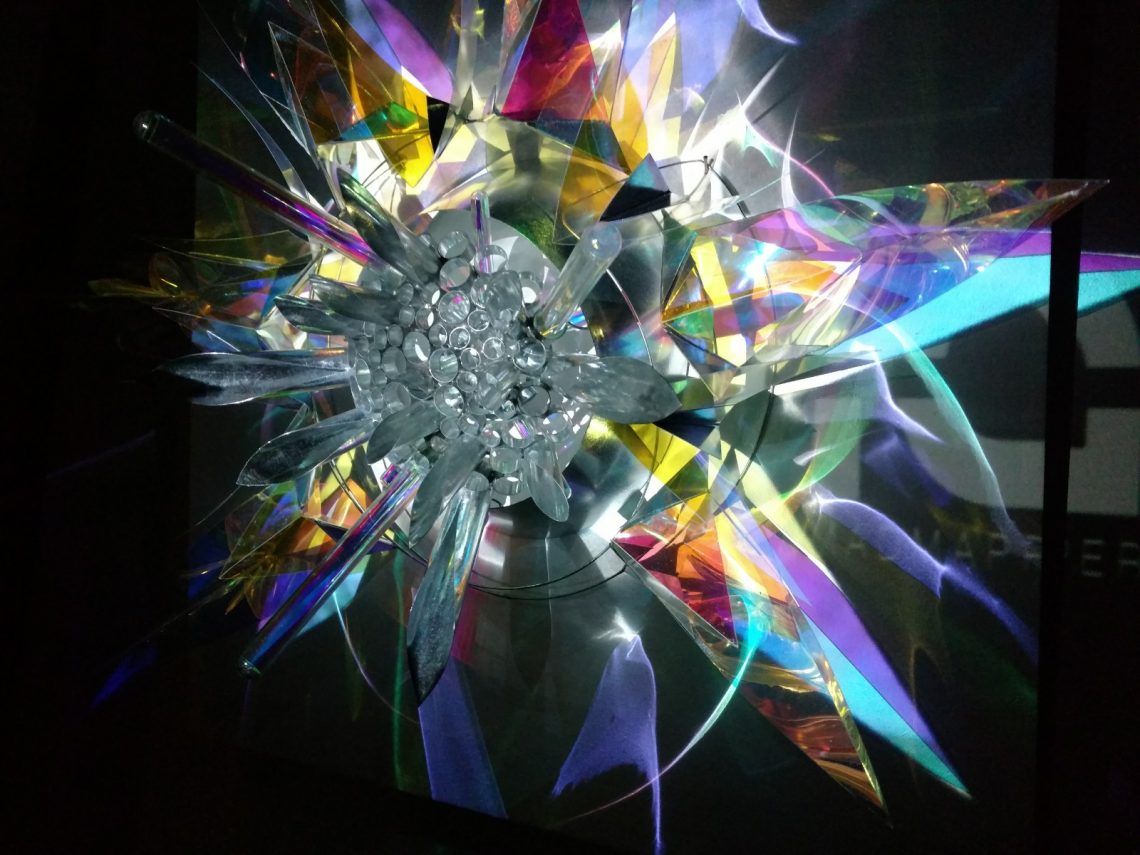
Though I am well into my current project with the radiolarian, which I will describe in greater detail in my next post, I am excited by the serendipity I have found in the tools and methods of research that is being conducted here. I look forward to spending more time with the crew and fellow artists-at-sea as we further investigate what lies in the deep!
